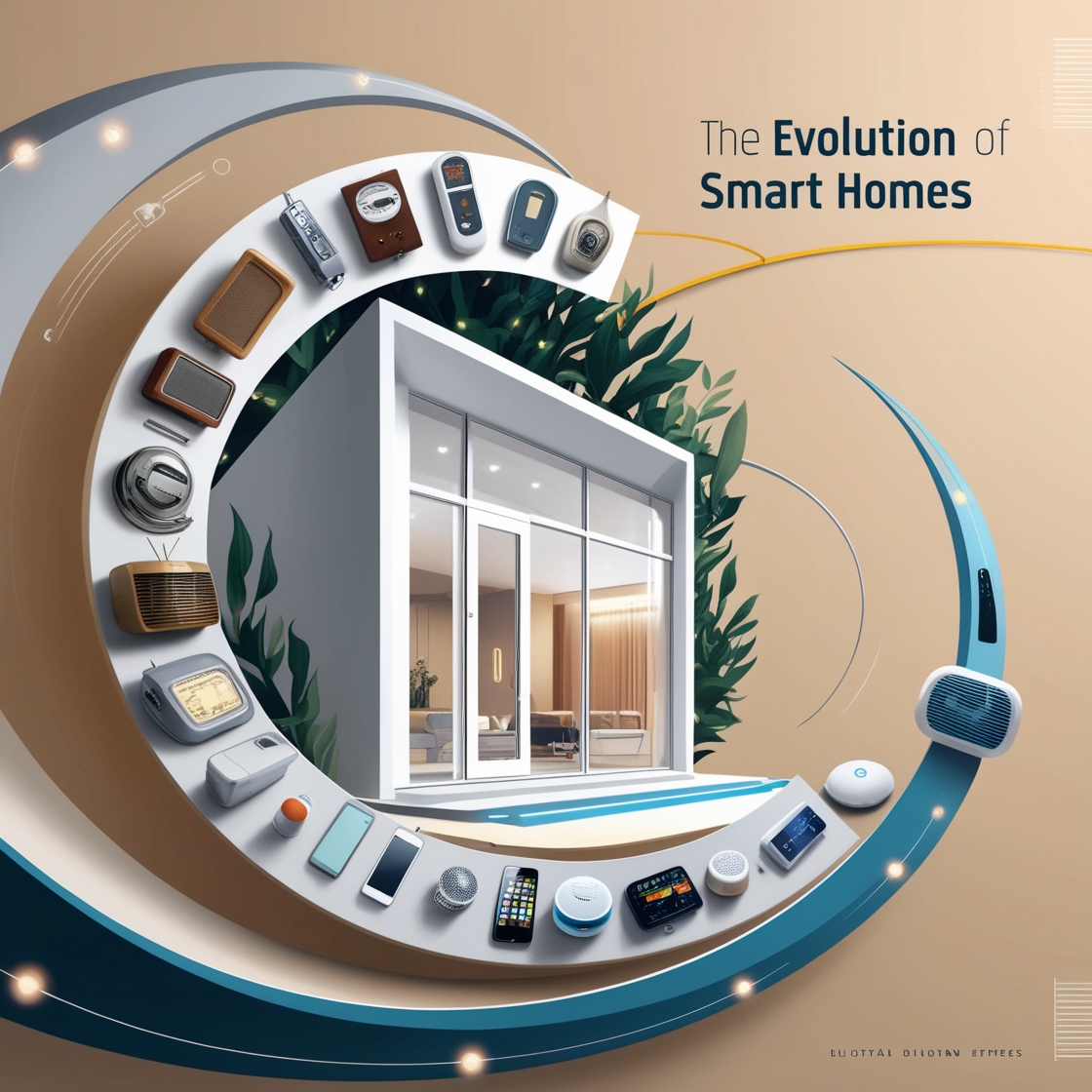Introduction
Smart homes have transformed the way we live, blending technology with everyday life. From basic automation to fully integrated systems, the evolution of smart homes has been remarkable. But how did we get here? Let’s take a deep dive into the journey of smart homes.
1. The Early Days of Home Automation
1.1 The Concept of Home Automation
The idea of automating home tasks dates back to the early 20th century. Imagine the first light bulb switch: it was revolutionary! Home automation aimed to simplify life, initially focusing on lighting and heating systems.
1.2 The Advent of Appliances
In the 1950s and 60s, the introduction of appliances like dishwashers and microwaves marked the beginning of home convenience. These innovations set the stage for more advanced automation.
2. The Rise of Personal Computers
2.1 Computers in the Home
With personal computers entering households in the 1980s, technology began to change the way we interacted with our living spaces. Software developments allowed users to control devices remotely, albeit in a limited fashion.
2.2 The Birth of Smart Technologies
By the late 1990s, the first true smart devices emerged. Programmable thermostats, such as the Honeywell RTH9585WF, allowed homeowners to customize their heating and cooling schedules.
3. The Internet Revolution
3.1 Connectivity and IoT
The rise of the internet in the late 90s and early 2000s was a game-changer. The Internet of Things (IoT) enabled devices to communicate with each other, paving the way for more integrated smart home solutions.
3.2 Early Smart Home Systems
Companies like X10 launched products that could control lights and appliances via the internet, making it easier to manage home systems remotely.
4. The Smartphone Era
4.1 The Power of Apps
With the introduction of smartphones, managing smart home devices became more accessible. Mobile apps allowed users to control everything from their lights to their security systems with a few taps on a screen.
4.2 Voice Assistants Enter the Scene
The launch of voice assistants like Amazon’s Alexa and Google Assistant further revolutionized smart homes. Suddenly, homeowners could control their environments with simple voice commands.
5. The Smart Home Ecosystem
5.1 Integration and Interoperability
Today’s smart homes rely on a wide array of interconnected devices. Smart hubs and ecosystems, like Apple HomeKit and Samsung SmartThings, allow users to integrate various devices seamlessly.
5.2 The Role of AI
Artificial Intelligence plays a crucial role in modern smart homes. Smart devices learn user preferences and habits, allowing for personalized automation that enhances convenience and energy efficiency.
6. Security in Smart Homes
6.1 Advanced Security Solutions
With the evolution of smart homes, security systems have become more sophisticated. Smart cameras, motion detectors, and door locks can now be monitored and controlled remotely, providing peace of mind for homeowners.
6.2 Privacy Concerns
However, the rise of smart technology also raises privacy concerns. As more devices collect data, the need for robust cybersecurity measures becomes paramount.
7. The Future of Smart Homes
7.1 Emerging Technologies
Looking ahead, technologies like 5G and edge computing promise to further enhance smart home capabilities. Imagine devices that respond instantaneously, improving overall efficiency and user experience.
7.2 Sustainable Living
Smart homes will increasingly focus on sustainability. Smart energy management systems can help reduce consumption and promote eco-friendly living.
Conclusion
The evolution of smart homes reflects a broader trend towards integrating technology into our daily lives. As innovations continue to emerge, smart homes will become even more intuitive, connected, and efficient. Whether for convenience, security, or sustainability, the future of smart homes looks bright.
FAQs
1. What is a smart home?
A smart home is a residence equipped with devices that can be controlled remotely, often connected via the internet, allowing for automation of various household tasks.
2. How do smart home devices communicate?
Smart devices typically communicate through Wi-Fi, Bluetooth, or Zigbee, allowing them to work together within a connected network.
3. Are smart homes secure?
While many smart devices have built-in security features, vulnerabilities can exist. It’s crucial to use strong passwords and keep devices updated to protect against potential threats.
4. Can I retrofit my home to be smart?
Absolutely! Many smart devices are designed for easy installation and can be added to existing homes without major renovations.
5. What’s the most essential smart home device?
It depends on your needs, but many consider smart thermostats or smart security systems to be foundational for enhancing home convenience and safety.
